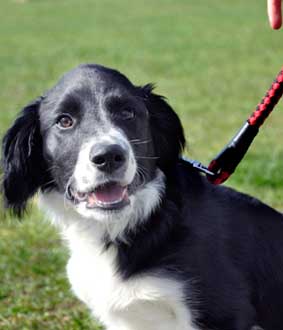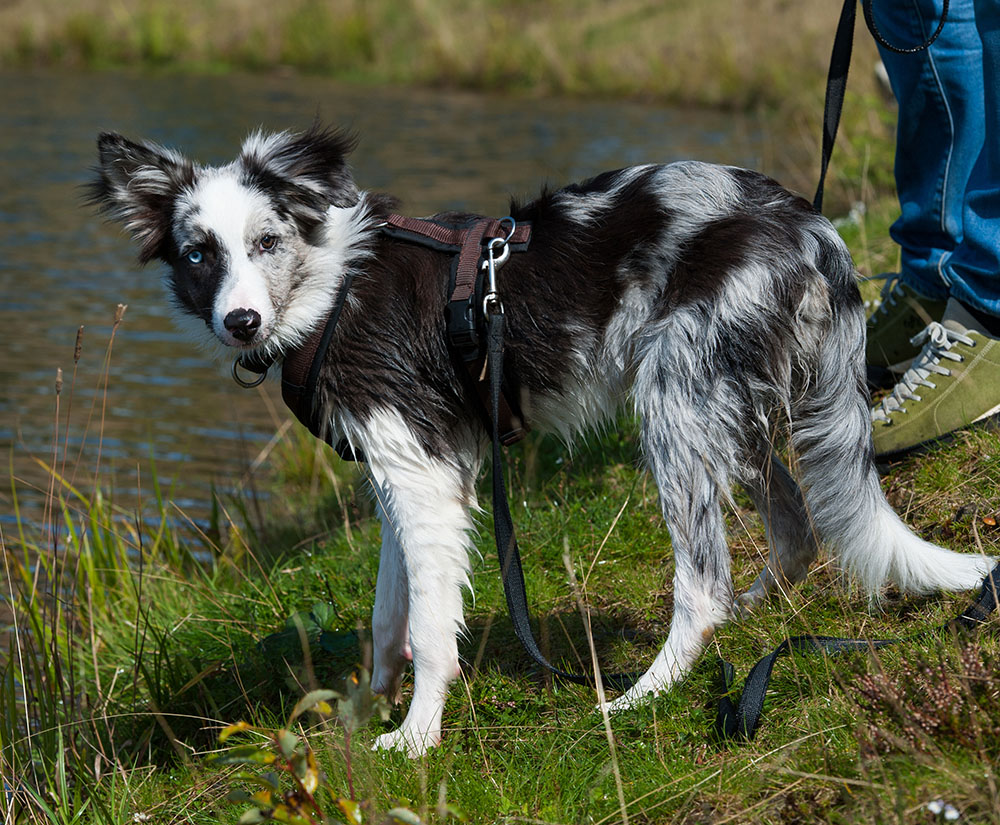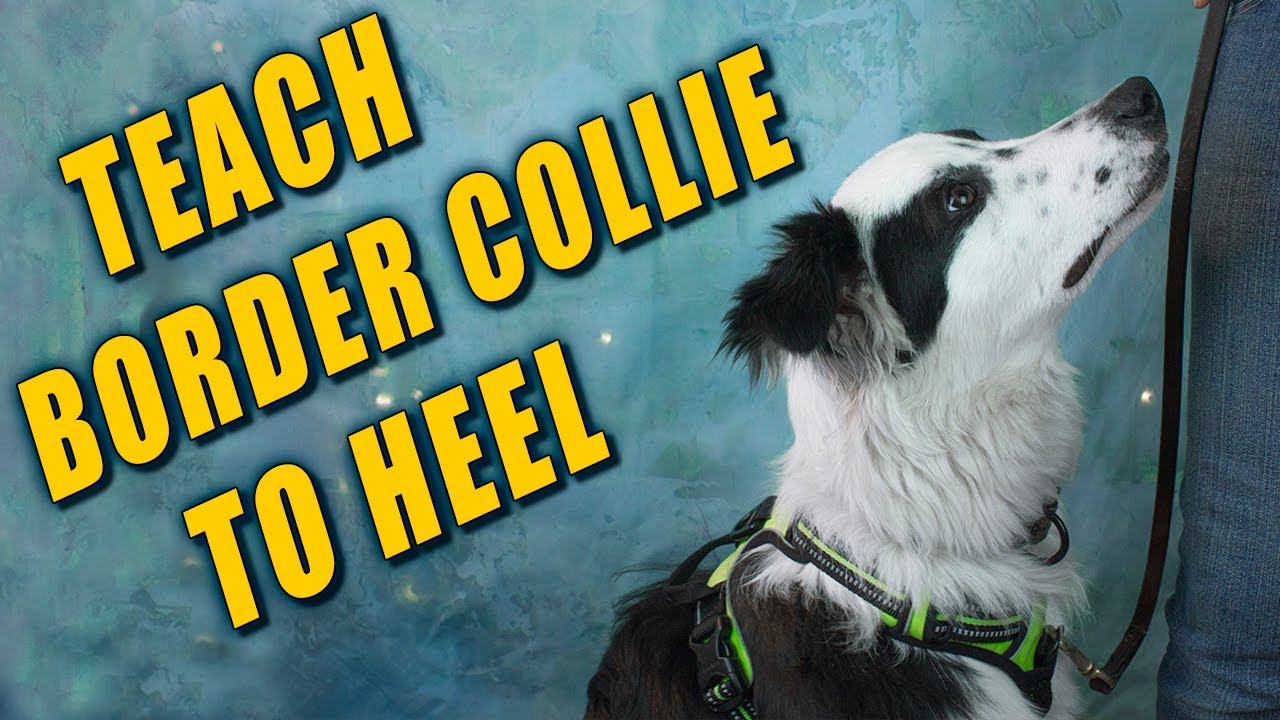Leash training a Border Collie can seem challenging. Yet, it is essential for a well-behaved pet.
Border Collies are energetic and intelligent dogs. Training them on a leash requires patience and consistency. The process can be rewarding, leading to a happier and more obedient dog. Understanding your dog’s nature is crucial. Border Collies are smart and quick learners.
This makes leash training easier if done correctly. In this guide, we will explore effective methods and tips. You will learn how to make leash training a positive experience. Whether you are a new dog owner or have experience, these insights will help you succeed. Let’s get started on this important journey with your Border Collie.
Choosing The Right Leash
Leash training a Border Collie requires the right tools. The leash you choose is crucial. It ensures control and comfort for both you and your dog. Not all leashes are the same. Different types serve different purposes. Understanding these types will help you make the best choice.
Types Of Leashes
There are several types of leashes available. Each has its own advantages. Here are a few common types:
- Standard Leash: This is the most common type. It usually measures 4 to 6 feet. Made of nylon or leather, it’s durable and easy to use.
- Retractable Leash: This leash extends and retracts. It allows your dog more freedom to roam. It can extend up to 30 feet.
- Martingale Leash: This is a combination of a collar and leash. It tightens slightly when the dog pulls. Good for dogs prone to slipping out of collars.
- Chain Leash: Made of metal links, this leash is for dogs that chew through other materials.
Leash Length
The length of the leash is important. It impacts how much freedom your dog has. Here are some common lengths and their uses:
| Leash Length | Uses |
|---|---|
| 4 Feet | Great for crowded places. Keeps your dog close to you. |
| 6 Feet | Most common length. Balances control and freedom. |
| 10 Feet | Good for training recall commands. Allows some freedom. |
| 30 Feet | Used for specific training purposes. Offers maximum freedom. |
Choose the right leash for your Border Collie. It will make training easier and more enjoyable.

Credit: www.reddit.com
Preparing For Training
Preparing for leash training your Border Collie is crucial for success. This step ensures you and your dog are ready for the process. A well-prepared start sets the tone for effective training sessions.
Necessary Supplies
Gathering the right supplies is the first step. You will need a comfortable leash, a collar or harness, and tasty treats. Choose a leash that is durable yet light. A good collar or harness should fit snugly but not too tight. Treats should be small, soft, and appealing to your dog.
A clicker can also be useful. It helps mark good behavior instantly. You may also want a waste bag dispenser for cleaning up after your dog. Having these supplies ready makes the training sessions smoother.
Setting Expectations
Set realistic expectations before you begin. Leash training takes time and patience. Border Collies are smart but can be stubborn. They may need consistent practice to master walking on a leash.
Understand that your dog might not get it right away. Celebrate small wins and progress. Avoid getting frustrated if things don’t go as planned. Stay calm and patient. Consistency and positive reinforcement are key to success.
Introducing The Leash
Leash training a Border Collie can be an enjoyable experience. The key is to introduce the leash gradually and patiently. This will help your dog associate the leash with positive experiences. Below are two crucial steps to achieve this: the initial introduction and using positive reinforcement.
Initial Introduction
Start by letting your Border Collie sniff and explore the leash. Place it on the ground and allow your dog to interact with it. This helps reduce any fear or anxiety associated with the leash.
After a few minutes, gently clip the leash onto your dog’s collar. Let your Border Collie walk around the house with the leash attached. Supervise them to ensure they do not get tangled or frightened.
Gradually increase the time your dog spends with the leash attached. This helps your dog become accustomed to the sensation of wearing a leash. Keep these sessions short and positive to maintain your dog’s interest and comfort.
Positive Reinforcement
Use treats and praise to reinforce good behavior. Give your Border Collie a treat each time they allow you to clip on the leash. This creates a positive association with the leash.
When your dog walks calmly with the leash, offer verbal praise and another treat. This encourages calm behavior and reinforces the connection between the leash and positive experiences.
If your Border Collie pulls on the leash, stop walking and wait until they calm down. Once they settle, continue walking and reward their calm behavior. Consistent reinforcement helps your dog learn that calm behavior leads to rewards.
| Action | Reward |
|---|---|
| Allowing the leash to be clipped on | Treat |
| Walking calmly with the leash | Praise and Treat |
| Stopping when pulling | None, then treat for calming down |
Consistency is vital. Rewarding positive behavior and ignoring or correcting undesirable actions will help your Border Collie learn quickly.
Basic Commands
Leash training a Border Collie involves teaching them basic commands. These commands help control your dog and ensure their safety. Two crucial commands are “Sit and Stay” and the “Heel Command”.
Sit And Stay
Start by teaching your Border Collie to sit. Hold a treat close to their nose. Move your hand up, allowing their head to follow the treat. As their head goes up, their bottom will lower. Once they are in a sitting position, say “sit” and give them the treat. Repeat this process until they sit on command without the treat.
Next, teach them to stay. Ask your dog to sit. Open your palm in front of you and say “stay”. Take a few steps back. If they stay, give them a treat and praise them. Gradually increase the distance and duration. Practice this regularly to reinforce the command.
Heel Command
To teach the heel command, start with your dog on a leash. Hold the leash in your right hand and treats in your left. Keep your dog on your left side. Begin walking and say “heel” as they start to move. Use the treats to keep them close to your side.
If they pull ahead, stop walking. Wait until they come back to your side. Once they are in the correct position, give them a treat and praise them. Practice this command in short sessions. Consistency is key to success.
First Walks
Taking your Border Collie on their first walk is an exciting moment. This initial experience sets the tone for future leash training. It’s crucial to ensure these first walks are positive and enjoyable for both you and your dog.
Short Walks
Start with short walks. Border Collies are energetic, but they need to build stamina. Begin with 5-10 minute walks. Gradually increase the duration. Ensure your dog is comfortable with the leash. Reward them with treats and praise.
- Keep the pace slow.
- Use a comfortable leash and collar.
- Bring treats for positive reinforcement.
Controlled Environment
Choose a controlled environment for the first walks. Avoid busy streets or crowded parks. A quiet, familiar place like your backyard or a calm neighborhood street works best. This helps your Border Collie feel safe and less distracted.
| Environment | Benefits |
|---|---|
| Backyard | Familiar, safe, no distractions |
| Quiet Street | Calm, low traffic, easy to control |
Monitor your dog’s reactions. If they seem anxious, try a different location.
Handling Pulling
Leash training a Border Collie can be challenging. They are energetic and intelligent dogs. Learning to manage pulling is crucial. This will ensure a safe and enjoyable walk.
Stopping And Starting
Border Collies may pull when they are excited. To handle this, use the “stop and start” method.
- Stop walking the moment your dog pulls.
- Wait until your dog returns to you.
- Start walking again only when the leash is slack.
Be consistent with this method. Your dog will learn that pulling means no progress.
Rewarding Good Behavior
Positive reinforcement is key. Always reward your Border Collie for walking nicely.
- Use treats or a favorite toy.
- Praise your dog with a happy tone.
- Pet your dog to show approval.
Rewards should be immediate. Your dog needs to connect the good behavior with the reward.
Using these strategies, leash training your Border Collie can be effective. Consistency and patience are important. Your dog will learn to walk calmly by your side.
Advanced Training
Advanced training is essential for leash training a Border Collie. This stage involves longer walks and distraction training. These exercises help solidify your dog’s obedience and focus. Let’s dive into the advanced steps.
Longer Walks
Start by extending your walk durations gradually. Increase the time by 5-10 minutes every few days. This helps your Border Collie build endurance. It also keeps their mind engaged. Make sure to maintain a steady pace. Vary your routes to expose your dog to new environments. This will make the walks more interesting and challenging.
Distraction Training
Introduce distractions during walks. This could be other dogs, people, or noises. Keep your dog focused on you despite these distractions. Use treats and praise to reinforce good behavior. Practice in different settings, such as parks or busy streets. This ensures your Border Collie remains obedient in any situation. Stay patient and consistent. Your dog will gradually learn to ignore distractions.

Credit: www.lovelybordercollie.com
Common Challenges
Leash training a Border Collie can be a rewarding experience. Yet, it often comes with its own set of challenges. Understanding these common issues can help you address them effectively and make the process smoother for both you and your furry friend.
Reacting To Other Dogs
Border Collies are highly alert and intelligent dogs. They often react strongly to other dogs during walks. This reaction can range from curiosity to aggression. To manage this, start by keeping a safe distance from other dogs. Gradually decrease the distance as your dog becomes calmer.
Use positive reinforcement to reward your dog for calm behavior. Treats and praise work wonders. Consistency is key. Ensure that every calm interaction is rewarded. This helps your dog associate other dogs with positive experiences.
Fear Of The Leash
Some Border Collies may show fear or anxiety around the leash. This fear often stems from unfamiliarity or past negative experiences. Start by introducing the leash in a non-threatening way. Let your dog sniff and explore the leash without pressure.
Next, attach the leash to your dog’s collar and let them walk around the house. Do this for short periods. Gradually increase the duration as your dog becomes more comfortable. Always use a calm and soothing voice to reassure your dog.
Using treats can also help. Reward your dog for staying calm when the leash is attached. This positive association helps reduce fear and anxiety over time.
| Challenge | Solution |
|---|---|
| Reacting to Other Dogs | Keep a safe distance, use positive reinforcement |
| Fear of the Leash | Introduce leash slowly, use treats and calm voice |
Maintaining Progress
Maintaining progress in leash training a Border Collie is crucial. This clever breed learns quickly but needs consistent reinforcement. Let’s explore how to keep your dog on track.
Consistent Practice
Consistency is key in leash training. Practice daily, even if only for 10 minutes. During walks, use commands your dog knows. Keep sessions short but productive. This helps keep your dog focused.
Use the same commands every time. For example, “heel,” “sit,” and “stay.” This creates a routine your dog understands. Stick to a schedule. Morning and evening walks work well for most dogs. Consistent practice builds good habits and reinforces training.
Ongoing Reinforcement
Positive reinforcement keeps your Border Collie motivated. Use treats, praise, and affection to reward good behavior. This makes leash training a positive experience. Be patient and calm. Your dog will respond better to positive cues.
Keep sessions engaging. Border Collies are intelligent and need mental stimulation. Vary your walking routes. Introduce new challenges gradually. For example, walk in busier areas once your dog is comfortable. This helps your dog adapt to different environments.
Track your progress. Note improvements and areas needing work. Adjust your training methods if needed. Consistent practice and ongoing reinforcement ensure lasting results.

Credit: collieconsultant.co.uk
Frequently Asked Questions
How Do You Start Leash Training A Border Collie?
Begin by introducing the leash indoors. Let your Border Collie get used to wearing it. Use treats and praise to build positive associations. Gradually transition to outdoor walks, keeping sessions short and encouraging good behavior.
What Age Should You Start Leash Training?
You can start leash training your Border Collie as early as 8-10 weeks old. Beginning early helps them adapt quickly. Make sure to use positive reinforcement during training.
Why Is Leash Training Important For Border Collies?
Leash training is crucial for Border Collies because they are energetic and intelligent. It ensures safety during walks and helps manage their high energy levels. Proper training also strengthens your bond with your dog.
How Do You Stop A Border Collie From Pulling?
Use a no-pull harness and practice the “stop and go” method. When your Border Collie pulls, stop walking. Resume when they calm down. Reward them for walking nicely beside you.
Conclusion
Training your Border Collie to walk on a leash takes patience. Start with short sessions. Gradually increase the time. Use treats and praise to encourage good behavior. Consistency is key. This helps your dog understand expectations. Always stay calm and positive.
This builds trust between you and your dog. A well-trained Border Collie can enjoy walks safely. Remember, practice makes perfect. Happy training!
